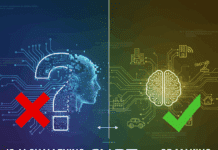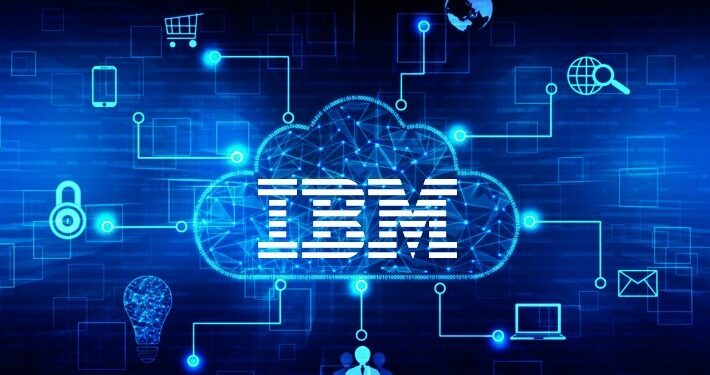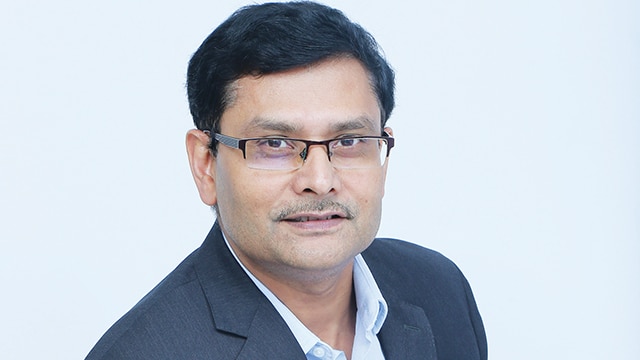With IoT creating a new digital realm today, it brings along intense connectivity requirements and standards for them to communicate with other devices through a common protocol. For these reasons, interoperability is the most defining and crucial element in the Internet of Things. To understand the landscape of IoT in India, the standards and interoperability challenges and the solutions for that Ankita KS, Senior Technology Journalist from EFY group spoke to Dr. Aloknath De, Corporate Vice President, and Chief Technology Officer, Samsung R&D Institute India – Bangalore. Excerpts follow..
Q: Many opine that IoT is just a buzzword coined to create hype by marketers? Do you agree with that line of thought? Or do you feel that IoT is opening an entirely new market?
A. IoT is not hype; so, I could not disagree more with that line of thought. I view IoT not only as ‘Internet of Things’, but also as ‘Integration of Technologies’. It allows multiple protocols for connectivity, various cloud technologies and humongous amounts of sensor data. Also, as multiple stakeholders are involved in this process of integration, every stakeholder has to be brought together, business cases have to be analyzed and revenue models have to be evolved. This process is time-consuming and takes efforts to fructify.
Q: In the past year what are the new developments in R&D with respect to IoT globally?
A. Globally, different IoT technologies have emerged and some have been embraced. You can see new types of devices getting connected to the internet; this would not have been thought of 5 years ago. In the Home context, I group these IoT devices into three broad classes. First is the ‘Elephant Class’ – comprising of large appliances like Refrigerator, washing machine, AC, Television which sits in its primary location. Second is the ‘Horse Class’ comprising of Speaker, Smartphone, Smart Watch that “trots” with the person. And the Third is the ‘Rat Class’ comprising of smaller sensors like the thermostat, door sensor, occupancy sensor. Some of these devices do not benefit always from data, but they enrich the IoT system by feeding sensor data. Like the Smart Home scenario, we can also define devices in the context of Manufacturing, Industry and other verticals.
Standards are emerging to cover multiple layers in IoT. Plug-fests are being done across the globe to test interoperability. Companies are investing in R&D to make devices smarter, securer and interoperable. Also, a trend is emerging in the control of home appliances over voice interactions. IoT in R&D is changing gears from mere automation to predictive services. ‘Sense, Analyze, React’ paradigm is shifting to ‘Sense, Analyze and Proact’.
Q. Are you satisfied at the rate of deployment of IoT solutions in India?
A. Both Yes and No. The rate of deployment of IoT is different for different verticals. For some verticals, like Smart Home, Smart Manufacturing and Smart Logistics, it’s relatively going good. You can see smart security and surveillance being adopted in apartment complexes; predictive maintenance being adopted for heavy machinery in the industries; asset tracking and monitoring being adopted in Smart Logistics.
Whereas for some verticals like Smart Cities initial steps have been taken. And then some verticals require more attention to resolve major technical challenges like Connected Healthcare (e.g. electronic health records, health regulations) and Smart Agriculture (e.g. Open spaces, placement of sensors, etc.). Overall, the Indian IoT market is still at its infancy; I would say in the exploratory phase with use cases being piloted primarily in the Home, Manufacturing and Logistics verticals.
Q. How do you see the IoT market (in India) evolving in the next 2-3 years?
A. In the next 2-3 years, we expect the number of connected devices in India to increase significantly with demand generating from both consumer and industrial applications. Nasscom predicts that there will be 2.7 billion connected devices by 2020, leading to an economic impact of up to $15B USD. Indian IoT market will represent more than 5% of the global market size. However, more than half of this market growth is locked by the lack of interoperability standards. Standards will play a major role in bringing in the required interoperability and reducing the lead time to develop IoT solutions and services. Smaller companies including startups will join hands with the MNCs to participate in a bigger ecosystem as IoT is purely an ecosystem play rather than an individual company trying to solve problems.
Q. Which industry segments do you believe will be driving a larger chunk of demand for IoT in India? Why?
A. On the consumer side, Smart Home and Building has been driving the demand for IoT as of today. Real Estate developers are offering Smart Homes with lighting automation and security as primary solutions. Access control, Smart Street Lighting, Common area surveillance are some primary use cases which are being deployed in a real-world scenario.
On the Enterprise side, Smart Manufacturing and Logistics drive major demand. Predictive maintenance of machinery is a high revenue-driven business case helping in the drastic reduction of losses by tracking the downtime/uptime of machinery. Asset tracking and management have been there for a while but with multiple IoT sensors coming in like temperature, moisture, weight, etc., the continuous monitoring and tracking of the assets has improved inaccuracy.
Q. Almost everyone agrees that there is a dire need for standards for the IoT ecosystem to develop. And this is being stated for quite some time now. What’s causing the delay? What’s missing that needs to happen?
A. India has moved from what and why to how in its IoT journey and evolution. IoT standards are still a work in progress in terms of its adoption. There are multiple standards available in the market with overlapping functionalities using different technical approaches battling out for IoT dominance. Some technologies are less proven than the others and so the goal of the standards body has to be to legitimize the technology and make customers feel safe in adopting it. Open standards are the key to expanding IoT innovation in India market. With open standards, there is a higher chance of finding the right resources to integrate the required technology into a successful IoT solution.
Q. For someone new to the concept—how would you explain the challenges caused by the lack of standards (interoperability)?
A. With the rise of connected things and machines, there will be billions of connected devices including sensors, appliances, and machinery, etc. generating terabytes of data. Security becomes one of the biggest concerns with this much number of devices and data. Also, the IoT market has become so fragmented that it has led to the development of multiple vertical-specific standards, various connectivity protocols and smaller groups working towards solving individual problems. What the industry needs is a secure consolidation of standards to achieve true interoperability.
Q. What are the key areas in which standards needed first?
A. Smart Manufacturing and Industry 4.0 would need the standards first. The Industrial Internet Consortium has already started working towards defining the standards for the industry vertical. It also has a liaison with the Open Connectivity Foundation to combine the best of both the frameworks. Smart Homes in India would not work in the Do-It-Yourself mode at least in the coming 2-3 years. The market penetration will happen primarily through the Real Estate Builders (B2B2C) working closely with System Integrators. So, the devices going into the homes needs to be standardized for seamless deployment of the smart home solution. Connected Health would be next and Agriculture a good to have.
Q. Would there be a need for different standards for different nations (e.g. India) or would it better to adopt global standards?
A. Significant portions of Standards are applicable globally. However, every nation has its own set of requirements. For example, a connected fan is something which could be found only in India and other emerging countries. But building a standard from scratch for a specific country needs a lot of resources, time and investment. Bringing in best practices from global markets opens up a lot of opportunities for companies to learn from and also customize based on the country-specific requirements on top of the established core framework. Also, companies get access to a bigger global ecosystem by adopting global standards.
Global standards are working together in a unified approach to address specific requirements and bring in the best of both through consolidation. One such example is the Asymmetrical bridge function between oneM2M and OCF exposing proximal OCF devices to distal oneM2M devices. While OCF is a device-centric common addressing framework with the current focus on Smart Home, oneM2M is a cloud service layer with a focus on Smart Cities; Working in tandem, they open up a whole new set of use cases and standards interworking.
Q. How does OCF aim to solve this challenge of standards & interoperability?
A. OCF stands for Open Connectivity Foundation. It is an open-source consortium that delivers “just-works” interconnectivity for developers, manufacturers, and end-users. Through a common communication framework, OCF connects and manages information flow intelligently among devices. This framework is agnostic of device form factor, the operating system, manufacturer or even service provider
Q. What category of standards is OCF working on? And that’s not within OCF’s domain, but important for the IoT eco-system?
A. OCF’s current focus is developing Standards for Smart Home and Buildings. It aims to build Standards for Health, Automotive, and Industry; possibly in conjunction with partners going forward. But OCF’s common addressing scheme and the core framework enables it to be easily adapted into other verticals
Q. What is the main vision and objectives behind OCF India Forum?
A. OCF India Forum is a local chapter of OCF established in April 2019 with 45+ member companies and Nasscom CoE IoT as its Executive Office. The OCF India Steering Committee comprises of representatives from Nasscom, Samsung, Intel, L&T Technology Services and Granite River Labs.
OCF India’s vision and objectives are twofold, one is to facilitate small size companies including SMEs & startups to easily build interoperable IoT products using the Open Source implementation of OCF spec (IoTivity) The second is to build & Engage the Indian IoT Ecosystem including Industry, Startups, University, Government, Dev community to work towards a common cause of IoT Standardization.
Q. What should happen within the next year, and the next three years—to indicate that OCF India is succeeding in its charter?
A. Within a year more companies joining OCF India Forum; with 50 in 2019 and overall 100+ by 2020 and the developer community contributing actively into IoTivity. In the next 3 years, Indian MNCs will be adopting OCF to create a bigger IoT ecosystem for the startups. OCF is recognized as a National Standard alongside oneM2M covering ‘proximal’ and ‘distal’ devices and OCF will have a certification lab in India.
Q. What role are partners like NASSCOM playing in enabling OCF India to achieve its mission?
A. The Center of Excellence (CoE) for IoT is a joint an initiative of Nasscom, MeiTy, and ERNET. It was established in India to jump-start the Indian IoT ecosystem by helping IoT startups to leverage cutting edge technology & build market-ready products. Nasscom CoE IoT will serve as the Executive Office of OCF India Forum. Having a neutral entity represent and drive the Standards the initiative encourages faster ecosystem growth and adoption. With a well-established network of Industry, Academia, Startups and Government, Nasscom CoE IoT will help OCF India towards a much-focused ecosystem engagement drive.
Q. Any initiatives executed, and any planned in the near future—by OCF India?
A. OCF India has been participating in IoT events across India since 2018 in the form of Seminar, Exhibition Booth & Workshop; To name a few – IoTShow 2019, 3rd IoT India Expo 2019, 7th IoT Symposium 2018. Series of hands-on workshops are planned to engage the gov’t and dev community. Also, in line are some of the premiere IoT events in India where OCF India will participate this year like IoT India Congress 2019, IoTNext 2019. The Flagship event “OCF India Day” co-located with Open Source India 2019
















































































